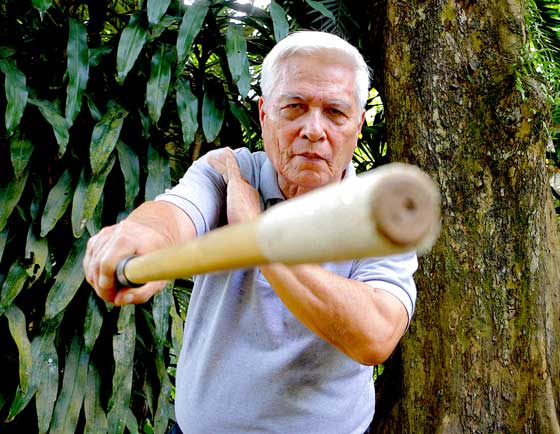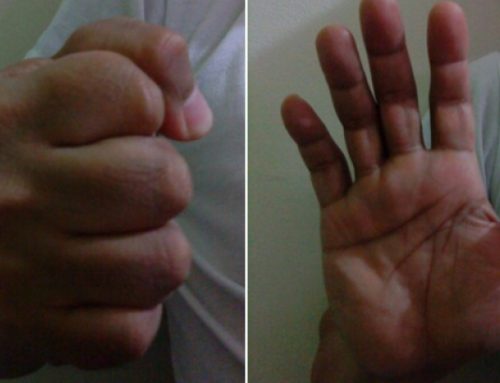It takes time to articulate and put into writing the principles and techniques of one’s martial art. Miyamoto Musashi, Japan’s greatest swordsman and author of Go Rin No Sho (The Book of Five Rings) did so at the ripe age of 60.
Such was the case with Filipino martial arts (FMA) luminary Ireneo Olavides, who at 74, penned his magnum opus titled Out of the Shadows, Eskrima De Campo: History, Philosophy and Basic Techniques. Olavides is the patriarch of the Eskrima De Campo JDC-IO clan. The acronym JDC-IO (sometimes pronounced “jadecio”) stands for Jose Diaz Caballero, Olavides’ late teacher while IO is his initials.

Maestro Ireneo Olavides, patriarch of the Eskrima De Campo JDC-IO clan, demonstrates a technique. PHOTO COURTESY OF ROM FACTOLERIN
Olavides, known as Manong Eric among his students, was Caballero’s protégé. Caballero’s original style is known by the name De Campo 1-2-3 Orihinal. Eskrima De Campo JDC-IO is Olavides’ expression of the battle-tested art he received from Caballero.
“My goal is that the art I learned from Manong Jose be taught and represented properly,” said Olavides on his motivation to write the book.
Eskrima De Campo, while not as popular as other FMA systems, owns a fearsome reputation due to the fact that it was the art used by Caballero to become an undisputed champion of the blood sport of juego todo (all-out stickfighting without armor). De Campo is classified as a largo mano or long-range style.
The Spanish term De Campo pertains to the spacious open fields, an environment conducive to the use of long-range fighting techniques.
Largo mano fighters recognize the fact that the stick is first and foremost an impact weapon and it is best to capitalize on its long-range capability. The stick used in largo mano is about 30 inches, considerably longer than most FMA fighting sticks. Largo mano strikes are delivered with surgical precision on vital areas. Using the length of the weapon to his advantage, a largo mano fighter avoids stick-to-stick contact during a skirmish and attempts to hit the opponent’s weapon hand and other soft tissue targets instead. Whenever possible, a largo mano stylist uses footwork and evasive body movements to avoid blows instead of blocking.

The cover of Olavides’ book Out of the Shadows, Eskrima De Campo: History, Philosophy and Basic Techniques CONTRIBUTED PHOTO
“I hope that the publication of my book will dispel the many misconceptions about De Campo and that through it, the public will get a glimpse of the quality and standard of FMA as Manong Jose intended it to be,” Olavides said.
Olavides is highly qualified to write the book not only because of his martial skills and his relationship with Caballero but also because of his professional background. He was a college professor and defensive tactics instructor who was largely responsible for streamlining Caballero’s original curriculum.
While Eskrima De Campo JDC-IO has training groups in various parts of the Philippines and abroad, the organization has maintained a low profile for so many years, with Olavides himself screening prospective members. The dearth of authentic De Campo instructors as well as reference materials has resulted in the many fallacies about the art.
“My book, which offers a comprehensive introduction to the system, will serve well those who are looking for quality information about De Campo,” Olavides said.
The Visayan eskrima maestro, in time with the publication of his book, intends to teach his martial art to more people. He attributed the decision, which like the production of the book is long in the making, to serendipity. “Things happen when you are with the right people, in the right place, at the right time,” he concluded.
To reserve a copy of the book email Eskrimadecampo.jdciomanila@gmail.com or call 09214800342.





















